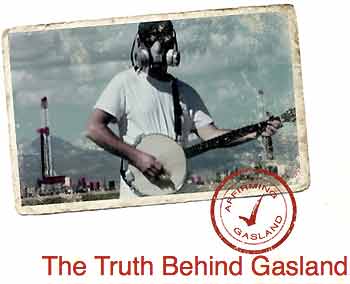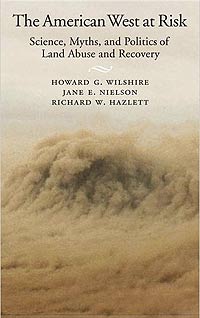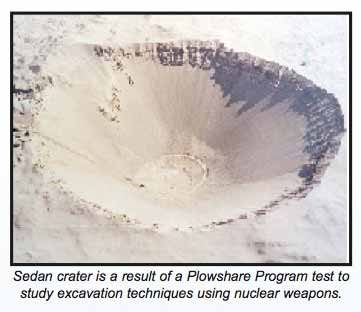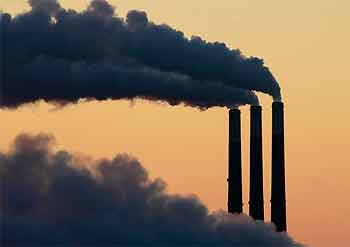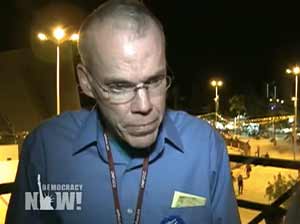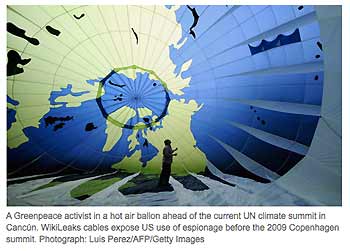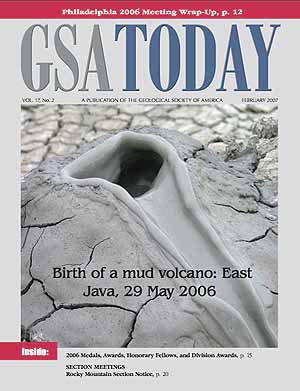Experts
Our analysis suggests that while shale gas development poses significant risks to the environment, including faulty well construction, blowouts, and above-ground contamination due to leaks and spills of fracturing fluids and waste water, technologies and best practices exist that can help manage these risks.
Best practices are currently being applied by some producers in some locations, but not by all producers in all locations. Enforcing strong regulations is necessary to ensure broader adoption of these practices and to minimize risk to the environment. In addition, if increased shale gas development is to be undertaken responsibly, the cumulative risks of developing thousands of wells must be considered.
The report concludes that faulty well construction, in particular poorly cemented steel casings needed to isolate the gas from shallow formations, as well as above-ground contamination due to leaks and spills of fracturing fluids and waste water, pose more significant risks to the environment.
In addition, continued study and improved communication of the environmental risks associated with both individual wells and large scale shale gas development are essential for society to make well-informed decisions about its energy future.
"Although the technologies, best practices, and regulations that can help minimize these risks exist, they have not yet been universally adopted," says Worldwatch Fellow and co-author Saya Kitasei. "Experiences in Colorado, Wyoming, Pennsylvania, and New York demonstrate that strong public pressure exists for stricter oversight."
Mark Zoback is one of the scientists on the short list for the upcoming EPA study.
The Worldwatch Institute is an independent research organization recognized by opinion leaders around the world for its accessible, fact-based analysis of critical global issues. The Institute's three main program areas include Climate & Energy, Food & Agriculture, and the Green Economy.
See: Flavin, C., and S. Kitasei. The Role of Natural Gas in a Low-Carbon Energy Economy. Briefing paper. Natural Gas and Sustainable Energy Initiative. Washington, D.C.: Worldwatch Institute, 2010. (PDF, 617kb)
From Sourcewatch:
Immediately upon the film's release, Energy In Depth issued a paper claiming to "debunk" the film's documentary evidence.
Energy in Depth (EID) is a pro-oil-and-gas drilling industry front group formed by the American Petroleum Institute, the Petroleum Association of America and dozens of additional industry organizations for the purpose of denouncing the FRAC Act proposed by Colorado U.S. Rep. Diana DeGette to regulate underground fracking fluids.
EID has crafted an entire campaign to delegitimize Fox's film, coining itself "Debunking Gasland." Many Facebook and Google users have even reported "Debunking Gasland" ads popping up on those respective websites.
Josh Fox has responded to every claim in "Debunking Gasland" put forth by Energy In Depth in a piece titled "Affirming Gasland."
History of regulating hydraulic fracturing under the Safe Drinking Water Act (SDWA)
From Affirming Gasland, "Supplemental Reading Section", p. 24.
The Safe Drinking Water Act requires EPA to promulgate regulations for states to administer these provisions of the law in order to protect underground sources of drinking water. However, although the SDWA gave the EPA the authority to regulate underground injection practices, Congress also directed that the EPA should not prescribe unnecessary regulation on oil- and gas- related injection.
Therefore, after the Safe Drinking Water Act passed, the EPA erroneously took the position that hydraulic fracturing did not fall within the regulatory definition of underground injection as provided in the Act.
In 1997 the 11th Circuit Court of Appeals laid the matter to rest when it conclusively ruled in LEAF v EPA, 118 F.3d 1467 (11th Cir. 1997) that hydraulic fracturing activities constituted “underground injection” under Part C of the SDWA.
As a result of the court’s ruling, in 1999 the state of Alabama amended its rules and made hydrofracking subject to the provisions of Part C of the SDWA by requiring Class II permits for each hydrofracking well.
Cheney’s Halliburton (a prime developer and leading practitioner of hydraulic fracturing) began lobbying Washington to exempt fracturing from regulation under the Safe Drinking Water Act.
Then in 2001, during his second week in office, George W. Bush created the Energy Task Force, with Vice President Dick Cheney as chairman. The mission of the task force aimed to “develop a national energy policy designed to help the private sector.” Its final report included a recommendation to exempt fracturing from regulation. Cheney removed the exemption from the draft only after being pressed by EPA chief Christie Whitman.
The exemption surfaced again in the Bush/Cheney Energy Bill of 2003 which did not pass, and reemerged one final time, in the Energy Policy Act of 2005, thanks, in part, to the efforts of Congressmen James Inhofe of Oklahoma and Joe Barton of Texas. To avoid the effect of the ruling in LEAF v EPA, Sec 322 of the Act specifically provides that the term “underground injection” excludes the underground injection of fluids pursuant to hydraulic fracturing operations related to oil, gas, or geothermal production activities. This clause from the law is actually photographed in Gasland at 31:42.
The 2005 Energy Policy Act also altered the Clean Water Act stormwater provisions. Pub.L. No. 109-58, § 323, 119 Stat. 694 (codified as amended at 33 U.S.C. § 1362(24). Section 323 modified the Clean Water Act's definition of an oil and gas exploration and production activity to include oil and gas construction activities. Because the Clean Water Act mandates that the EPA not require a stormwater permit for oil and gas exploration and production activities, it has been argued that the change in the Energy Policy Act of 2005 excluded oil and gas construction activities from stormwater permit coverage, without regard of the size of acreage disturbed.
Previous laws exempted oil and gas drilling, known as oil and gas exploration and production, from Superfund (CERCLA) and RCRA (hazardous waste). CERCLA includes substances that are elements of petroleum as hazardous in Section 101(14), yet crude oil and petroleum are specifically exempt from coverage under the last clause of the section. Thus, hazardous chemicals that would otherwise fall under the ambit of CERCLA are immune from the statute when encompassed in petroleum or crude oil. Likewise, the Solid Waste Disposal Act (SWDA) of 1980 exempted oil field wastes from Subtitle C of the RCRA.
Oil and gas drilling is not typically covered by Clean Air Act permitting since EPA’s CAA regulations do not allow EPA to aggregate or group a set of wells as a single source of air emissions. EPA has proposed rules that if promulgated would allow EPA and the states to aggregate air emissions coming from one company when the facilities are connected to one set of piping.
Some oil and gas machines emit large enough air emissions to be subject to air permit requirements, for example gas dehydradation units emitting over 10 tons per year of volatile organic compounds (VOCs) and gas compressions engines emitting over 50 tons of NOx per year.
However, the industry remains mostly unregulated under this statute by using many smaller compressors and dehydrators which individually emit less VOCs than the limits. If these units were to be aggregated and counted as one larger source (which they should be, in our view) the regulations would be in effect. In addition, neither the diesel engines used to drill nor the volatiles that come off the reserve pits are subject to CAA permit regulations.
For a more complete list of these exemptions please see the following websites:
Earthworks. (2007). "The Oil and Gas Industry’s Exclusions and Exemptions to Major Environmental Statutes."
NRDC. (2007). "Drilling Down: Protecting Western Communities from the Health and Environmental Effects of Oil and Gas Production."
NRDC. (2007). "Toxic Oil and Gas Production Gets a Free Pass to Pollute."
The Energy Policy Act negated the effect of the Alabama LEAF case by expressly defining HF as not subject to the SDWA, provided that HF fluids did not contain diesel; HF that contains diesel remains subject to SDWA limitations.
See: IADC. "Alabama lawsuit poses threat to hydraulic fracturing across U.S." Drilling Contractor. Jan/Feb. 2000.
See: Gasland vs Big Oil and Gas
See: Gasland - The Debate
See: Bushwhacked : Life in George W. Bush's America
See: U.S. Environmental Protection Agency (EPA): Hydraulic Fracturing Study (2010-2012)
Expert reports and selections of news accounts and analysis of the breaking news concerning the meltdown of Japan's nuclear reactors ongoing since March 13, 2011.
To respond to questions we’ve been getting, we’re developing a set of responses to “frequently asked questions.” The FAQ is located here: "Nuclear Reactor Crisis in Japan FAQs", and we will continue adding to it through the week.
Follow Google News on 'meltdown'.
Contact All Things Nuclear.
A project of the Union of Concerned Scientists.
"The American West at Risk emphasizes the need for genuine concern for our precious soils, freshwater, and other environmental resources. As the authors document, we should be making every effort to conserve and protect all our vital natural resources, which indeed support human life."--David Pimentel, Cornell University
"If you wish to be informed, enraged, enlightened, and appalled about the American west, this is the book to read."--Journal of Environmental Quality
See: Gasbuggy Nuclear Test Site.
The Gasbuggy Nuclear Test Site is the location of a 1967 underground nuclear explosion, conducted to test the viability of using a nuclear device to aid in natural gas extraction. It was part of the Plowshare Program, the program to develop peaceful uses of nuclear weapons, and was the first use of a nuclear explosion for industrial purposes.
See: Google-eye view of a nuclear test site - Boing Boing
See: Appendix 7, p. 399.
Plowshare can help mankind reshape the earth into a Garden of Eden by overcoming the forces of nature.
-Glenn Seaborg, Man and Atom (1971)
Description
The American West at Risk summarizes the dominant human-generated environmental challenges in the 11 contiguous arid western United States - America's legendary, even mythical, frontier. When discovered by European explorers and later settlers, the west boasted rich soils, bountiful fisheries, immense, dense forests, sparkling streams, untapped ore deposits, and oil bonanzas. It now faces depletion of many of these resources, and potentially serious threats to its few "renewable" resources.
See: Fracking for Natural Gas | The American West at Risk Blog.
See: Environment: Project Dubious (1973). Time.
See: Adam Lederer. Project Wagon Wheel.
Brown, C. F. “A history of the development of the Pictured Cliffs Sandstone in the San Juan basin of northwestern New Mexico.” Cretaceous and Tertiary rocks of the southern Colorado Plateau: Four Corners Geological Society Memoir (1973): 178–184.
Schneider, Keith. New York Times. Aug. 26, 1990. "In the Trail of the Nuclear Arms Industry."
"In the Trail of the Nuclear Arms Industry; What's Left Behind." Listing of sites. Contaminated processing plants, laboratories, nuclear reactors and testing grounds that were part of the nuclear weapons industry.
Jones, S. “Elimination Report: Project Rio Blanco.” U.S. Department of Energy | Office of Legacy Management, October 15, 1985.
Heiss, K. P. U.S. Atomic Energy Commission. Speical Report. Aug. 31, 1967. “The Economic Potentials of Natural Gas Production Stimulation by Nuclear Explosions.” Princeton: Mathematica Inc. (1967). (PDF, 8MB).
Chedd, Graham. “Plowshare's death rattle at Rio Blanco.” New Scientist 8, no. 1973. New Scientist (March 8, 1973): 544-545.
Download: Bombs for Peace Moratorium Ends- Testing Begins (2.5 MB)
The American West at Risk chronicles the road our nation has taken to its current catastrophic environmental state. The authors tour the U.S. to discuss challenges our nation faces & examine viable solutions.
Hundreds of millions of dollars in grants from major oil companies may have compromised the ethics of energy research at such institutions as UC Berkeley, UC Davis, Stanford and Cornell.
Cornell is considering leasing some of its land holdings to natural gas drillers. SUNY Binghamton signed a $1.4 million dollar gas lease in 2008.
See: Editorial - A Decision Above Reproach | The Cornell Daily Sun.
See: Lee Fuller. "HF 101: As Cornell Begins Study of Shale Gas Exploration, Energy In Depth Offers Itself Up as Resource for Ad Hoc Panel". Energy in Depth.
Read the full report here:
According to the 212-page study, released by the Center for American Progress, a Washington-based think tank, such companies as BP, Chevron, and ConocoPhillips have funded more than $800 million in potentially compromised research with few protections for academic independence.
For example, since 2002, Stanford has received $225 million from a consortium led by ExxonMobil to study technology to curb greenhouse gas emissions. The company operates refineries, oil drilling facilities, tankers and gas stations, making it a major emitter of carbon dioxide and other greenhouse gases globally.
As part of the Stanford contract, the industry controls all four voting seats on the research alliance's governing body, and peer review of faculty research proposals is done "at the discretion of industry sponsors," the report says.
...this report represents the first time independent analysts have systematically examined a set of written university-industry agreements within a specific research area—in this case, the energy R&D sector—to evaluate how well they balance the goals of the corporate sponsors to produce commercial research that advances business profits with the missions of American universities to perform high-quality, disinterested academic research that advances public knowledge for the betterment of society.
See: GCEP Director Sally M. Benson responds to Center for American Progress report: More
See: DemocracyNow!: Big Oil Goes to College: BP, ExxonMobil, Chevron, Shell Fund & Influence Research at Major Universities
See: DemocracyNow! Transcript on truth-out.org.
See: Helene Cooper and John M. Broder. "BP’s Ties to Agency Are Long and Complex". May 26, 2010. NYT.
Hopefully, this NYT “mention” will draw some much-needed media attention to the actual contents of my own report, which examines university-industry alliances to finance energy research on campus, and raises questions about whether the current structure of these alliances adequately protects the universities’ academic mission and their ability to carry out independent, high-quality, reliable, public-good research. This article today does not address these issues at all. But, helpfully, Cooper and Broder in their NYT story did note that BP, in a May 24th press release, has pledged $500 million for “Independent Research into Impact of Spill on Marine Environment,” with the first grants going to the University of Louisiana. It looks like the iron is hot to look more deeply at university-industry research partnerships of this kind. – Jennifer
Media reports indicate the University of California system may be on the verge of signing a contract to create the proposed Energy Biosciences Institute (EBI) with BP. It is obviously a matter of urgent priority for the health of the planet to promote research and innovation related to alternative energy, and it is imperative that public research institutions direct major new resources to such endeavors. It is not at all obvious, however, that public institutions should do this in collaboration with giant oil companies that are contributing massively to climate change.
At minimum, such collaborations require intense scrutiny and informed debate. The prospect of giant carbon polluters directing research related to and gaining control of key energy technologies is very troubling -- especially when the research is conducted at, and the technologies are developed in collaboration with, public institutions. In this regard, the details of the UC-BP research agreement are of great importance. They will specify how research priorities are to be established, and how the fruits of the research collaborationare to be managed and controlled.
See: LSU News. June 15, 2010. "LSU Receives $5 Million From BP to Fund Spill-Related Research Grant to support studies in everything from human and environmental impact to engineering solutions".
The funds will come from BP’s $500 million Gulf of Mexico Research Initiative, or GRI, which will support universities in the Gulf area in research on the fate and effects of oil, dispersed oil and dispersants.
Silhouetted against the sky at dusk, excess steam, along with non-scrubbed pollutants, spew from the smokestacks at Westar Energy's Jeffrey Energy Center coal-fired power plant near St. Marys, Kan. Credit: AP Photo/Charlie Riedel.
In the name of job creation and clean energy, the Obama administration has doled out billions of dollars in stimulus money to some of the nation’s biggest polluters and granted them sweeping exemptions from the most basic form of environmental oversight, a Center for Public Integrity investigation has found.
The administration has awarded more than 179,000 “categorical exclusions” to stimulus projects funded by federal agencies, freeing those projects from review under the National Environmental Policy Act, or NEPA. Coal-burning utilities like Westar Energy and Duke Energy, chemical manufacturer DuPont, and ethanol maker Didion Milling are among the firms with histories of serious environmental violations that have won blanket NEPA exemptions...
...Documents obtained by the Center show the administration has devised a speedy review process that relies on voluntary disclosures by companies to determine whether stimulus projects pose environmental harm. Corporate polluters often omitted mention of health, safety, and environmental violations from their applications.
Related Stories:
NEPA Exemptions: The Dirty Dozen List
Wisconsin Firm Receives Energy Grant Despite Chronic Pollution Problems
See: Pollution in Your Community | Scorecard
See: A Life’s Value May Depend on the Agency, but It’s Rising
See: Climate Co-benefits and Child Mortality Wedges
See: U.S. Environmental Protection Agency (EPA): Hydraulic Fracturing Study (2010-2012)
Democracy Now! caught up with McKibben at the Cancún Climate Conference in Mexico. We asked for his reaction to the diplomatic cables released by WikiLeaks showing how the U.S. manipulated last year’s climate talks in Cancún.
Some of the new data [Wikileaks] coming out today makes it clear that everyone’s suspicion that the U.S. was both bullying and buying countries into endorsing their do-little position on climate were even sort of worse than we had realized...
...They [The U.S. Congress] think because they can change the tax code, they can change the laws of nature...
...this U.N. process, has been going on forever, and it’s getting nowhere, and it’s not going to get anywhere substantive, until we have some power from the outside to push it.
"It’s just like a family reunion aboard the Titanic, you know?" And that’s sort of what it feels like. We can’t keep doing this. Until we can build some power outside of these arenas to actually push these guys, you know, this is—in the end, it’s not about how well people are communicating or how great the policy papers are. It’s on who has the power. And at the moment, that power rests in the hands of the fossil fuel industry and their allies in governments around the world.
And until we build some independent outside movement power to push back, then we’re never going to get—we’re going to get scraps from the table, at the very best.
See: Damian Carrington. "WikiLeaks cables reveal how US manipulated climate accord." The Guardian.co.uk. 2010-12-03.
See: Ian Traynor. "WikiLeaks cables: Cancún climate talks doomed to fail, says EU president." The Guardian.co.uk. 2010-12-03.
Abstract
On 29 May 2006, an eruption of steam, water, and, subsequently, mud occurred in eastern Java in a location where none had been previously documented.
This “pioneer” mud eruption (the first to occur at this site) appears to have been triggered by drilling of overpressured porous and permeable limestones at depths of ~2830 m below the surface.
We propose that the borehole provided a pressure connection between the aquifers in the limestones and overpressured mud in overlying units.
As this was not protected by steel casing, the pressure induced hydraulic fracturing, and fractures propagated to the surface, where pore fluid and some entrained sediment started to erupt.
Flow rates remain high (7000–150,000 m3 per day OR 1,849,204 gallons to 22,500,000,000 gallons per day) after 173 days of continuous eruption (at the time of this writing), indicating that the aquifer volume is probably significant. A continued jet of fluid, driven by this aquifer pressure, has caused erosion and entrainment of the overpressured mud.
As a result, we predict a caldera will form around the main vent with gentle sag-like subsidence of the region covered by the mud flow and surrounding areas. The eruption demonstrates that mud volcanoes can be initiated by fracture propagation through significant thicknesses of overburden and shows that the mud and fluid need not have previously coexisted, but can be “mixed” within unlithified sedimentary strata.
See: Wikipedia | Sidoarjo mud flow
In February 2010, a group led by experts from Britain's Durham University said new clues bolstered suspicions the catastrophe was caused by human error. In the peer-reviewed journal, Marine and Petroleum Geology, Professor Richard Davies, of the Centre for Research into Earth Energy Systems (CeREES), said that drillers, looking for gas nearby, had made a series of mistakes.
They had overestimated the pressure the well could tolerate, and had not placed protective casing around a section of open well. Then, after failing to find any gas, they hauled the drill out while the hole was extremely unstable. By withdrawing the drill, they exposed the wellhole to a "kick" from pressurised water and gas from surrounding rock formations. The result was a volcano-like inflow that the drillers tried in vain to stop.
In the same Marine and Petroleum Geology journal, the group of geologists and drilling engineers refuted the allegation showing that the “kick” maximum pressure were too low to fracture the rock formation.
The well pressure analysis based on credible data showed that the well is stronger than the maximum pressure exerted on the well. This implied that the hydro fracturing hypothesis is likely to be incorrect.
See: BBC News. 2007. "Drilling blamed for Java mud leak." BBC News | Asia-Pacific. January 24.
See: Alexis Madrigal. 2010. "Mud Volcano Was Man-Made, New Evidence Confirms". Wired | Science. February 11.
Sawolo, N., E. Sutriono, B. P Istadi, and A. B Darmoyo. 2009. "The LUSI mud volcano triggering controversy: Was it caused by drilling?" Marine and Petroleum Geology 26, no. 9: 1766–1784.
See: Sawolo, N., Sutriono, E., Istadi, B., Darmoyo, A.B. (2010). "Was LUSI caused by drilling? – Authors reply to discussion". Marine & Petroleum Geology 27:1658–1675.
This is an expert's view of our worldwide water crisis. References to facts are found in the back of the book making for an uncluttered read in language everyone can understand. Follow some of the stories about the World Bank and many other reversals of corporate efforts to privatize what ought to be a basic human right: clean water.
Hydraulic fracturing uses five million gallons per well with tens of thousands of wells planned for the Marcellus Shale. Water resources in "shale plays" are already threatened by mining operations and weak environmental justice. These invaluable resources need public protection. Volunteer regulation does not work.
See: Maude Barlow. Feb. 25, 2008. Foreign Policy In Focus. "The Global Water Crisis and the Coming Battle for the Right to Water."
See: Amy Goodman and Juan Gonzalez. "From Melting Glaciers to Structural Adjustment: Maude Barlow on the Need for Water Justice." Democracy Now! April 22, 2010.
See: Flow - The War Between Public Health and Private Interests
See: WATER: Rulings Restrict Clean Water Act, Foiling E.P.A.
Summary. In the month leading up to a baby's birth, the umbilical cord pulses with the equivalent of at least 300 quarts of blood each day, pumped back and forth from the nutrient- and oxygen-rich placenta to the rapidly growing child cradled in a sac of amniotic fluid. This cord is a lifeline between mother and baby, bearing nutrients that sustain life and propel growth.
Not long ago scientists thought that the placenta shielded cord blood — and the developing baby — from most chemicals and pollutants in the environment. But now we know that at this critical time when organs, vessels, membranes and systems are knit together from single cells to finished form in a span of weeks, the umbilical cord carries not only the building blocks of life, but also a steady stream of industrial chemicals, pollutants and pesticides that cross the placenta as readily as residues from cigarettes and alcohol. This is the human "body burden" — the pollution in people that permeates everyone in the world, including babies in the womb.
In a study spearheaded by the Environmental Working Group (EWG)S in collaboration with Commonweal, researchers at two major laboratories found an average of 200 industrial chemicals and pollutants in umbilical cord blood from 10 babies born in August and September of 2004 in U.S. hospitals. Tests revealed a total of 287 chemicals in the group. The umbilical cord blood of these 10 children, collected by Red Cross after the cord was cut, harbored pesticides, consumer product ingredients, and wastes from burning coal, gasoline, and garbage.

This study represents the first reported cord blood tests for 261 of the targeted chemicals and the first reported detections in cord blood for 209 compounds. Among them are eight perfluorochemicals used as stain and oil repellants in fast food packaging, clothes and textiles — including the Teflon chemical PFOA, recently characterized as a likely human carcinogen by the EPA's Science Advisory Board — dozens of widely used brominated flame retardants and their toxic by-products; and numerous pesticides.
Of the 287 chemicals we detected in umbilical cord blood, we know that 180 cause cancer in humans or animals, 217 are toxic to the brain and nervous system, and 208 cause birth defects or abnormal development in animal tests. The dangers of pre- or post-natal exposure to this complex mixture of carcinogens, developmental toxins and neurotoxins have never been studied.
Chemicals and pollutants detected in human umbilical cord blood
Source: Chemical analyses of 10 umbilical cord blood samples were conducted by AXYS Analytical Services (Sydney, BC) and Flett Research Ltd. (Winnipeg, MB).
Chemical exposures in the womb or during infancy can be dramatically more harmful than exposures later in life. Substantial scientific evidence demonstrates that children face amplified risks from their body burden of pollution; the findings are particularly strong for many of the chemicals found in this study, including mercury, PCBs and dioxins. Children's vulnerability derives from both rapid development and incomplete defense systems:
- A developing child's chemical exposures are greater pound-for-pound than those of adults.
- An immature, porous blood-brain barrier allows greater chemical exposures to the developing brain.
- Children have lower levels of some chemical-binding proteins, allowing more of a chemical to reach "target organs."
- A baby's organs and systems are rapidly developing, and thus are often more vulnerable to damage from chemical exposure.
- Systems that detoxify and excrete industrial chemicals are not fully developed.
- The longer future life span of a child compared to an adult allows more time for adverse effects to arise.
The 10 children in this study were chosen randomly, from among 2004's summer season of live births from mothers in Red Cross' volunteer, national cord blood collection program. They were not chosen because their parents work in the chemical industry or because they were known to bear problems from chemical exposures in the womb. Nevertheless, each baby was born polluted with a broad array of contaminants.
U.S. industries manufacture and import approximately 75,000 chemicals, 3,000 of them at over a million pounds per year. Health officials do not know how many of these chemicals pollute fetal blood and what the health consequences of in utero exposures may be.
Had we tested for a broader array of chemicals, we would almost certainly have detected far more than 287. But testing umbilical cord blood for industrial chemicals is technically challenging. Chemical manufacturers are not required to divulge to the public or government health officials methods to detect their chemicals in humans. Few labs are equipped with the machines and expertise to run the tests or the funding to develop the methods. Laboratories have yet to develop methods to test human tissues for the vast majority of chemicals on the market, and the few tests that labs are able to conduct are expensive. Laboratory costs for the cord blood analyses reported here were $10,000 per sample.
A developing baby depends on adults for protection, nutrition, and, ultimately, survival. As a society we have a responsibility to ensure that babies do not enter this world pre-polluted, with 200 industrial chemicals in their blood. Decades-old bans on a handful of chemicals like PCBs, lead gas additives, DDT and other pesticides have led to significant declines in people's blood levels of these pollutants. But good news like this is hard to find for other chemicals.
The Toxic Substances Control Act, the 1976 federal law meant to ensure the safety of commercial chemicals, essentially deemed 63,000 existing chemicals "safe as used" the day the law was passed, through mandated, en masse approval for use with no safety scrutiny. It forces the government to approve new chemicals within 90 days of a company's application at an average pace of seven per day. It has not been improved for nearly 30 years — longer than any other major environmental or public health statute — and does nothing to reduce or ensure the safety of exposure to pollution in the womb.
Because the Toxic Substances Control Act fails to mandate safety studies, the government has initiated a number of voluntary programs to gather more information about chemicals, most notably the high production volume (HPV) chemical screening program. But these efforts have been largely ineffective at reducing human exposures to chemicals. They are no substitute for a clear statutory requirement to protect children from the toxic effects of chemical exposure.
In light of the findings in this study and a substantial body of supporting science on the toxicity of early life exposures to industrial chemicals, we strongly urge that federal laws and policies be reformed to ensure that children are protected from chemicals, and that to the maximum extent possible, exposures to industrial chemicals before birth be eliminated. The sooner society takes action, the sooner we can reduce or end pollution in the womb.
See: World-Renowned Scientist Dr. Theo Colborn on the Health Effects of Water Contamination from Fracking
See: Fracking: Implications for Human and Environmental Health








